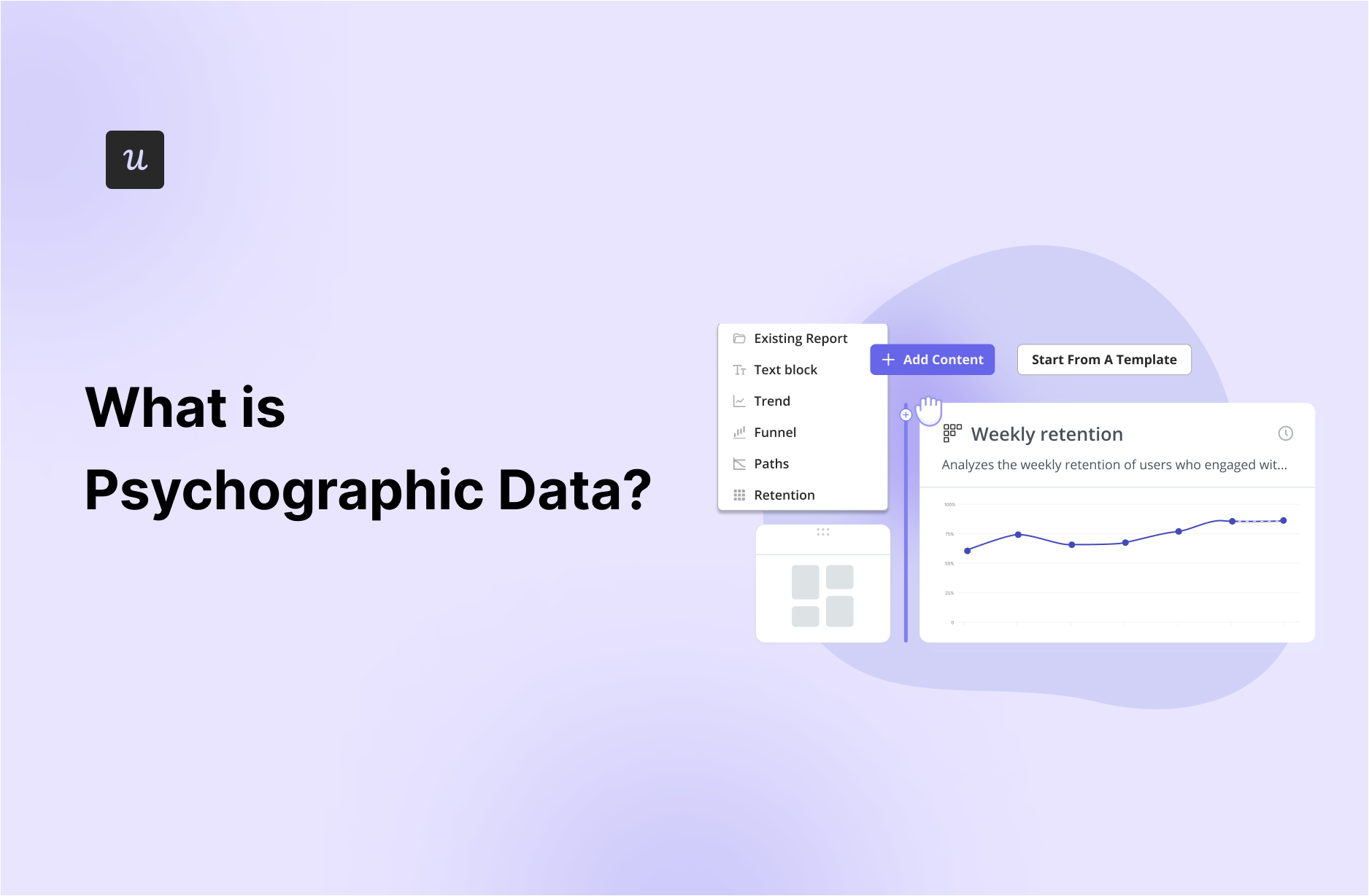
What is psychographic data? It’s the analysis of consumers’ attitudes, values, and lifestyles, enabling a more nuanced marketing approach compared to demographic data alone. Diving deeper into consumer behavior requires more than just demographics.
This article unpacks the ‘what’ and ‘why’ of psychographic data, setting the stage for its pivotal role in fine-tuning marketing strategies and creating customer-centric products.
Try Userpilot Now
See Why 1,000+ Teams Choose Userpilot

The power of psychographic data
Psychographic data offers a wealth of information about a person’s interests, values, attitudes, and personality traits. This detailed insight into a customer’s lifestyle, opinions, and values is crucial for understanding their behavior beyond demographics. Delving into the personal and emotional dimensions of customers equips businesses to:
- Design products that resonate with their target audience.
- Create marketing messages that are more effective and targeted.
- Drive more successful marketing campaigns.
The aim of psychographic research is to:
- Create a complete psychographic profile.
- Improve conversion rates.
- Personalize messaging.
- Create highly focused marketing strategies.
- Shape customer personas.
- Align messages.
- Boost conversions.
- Fortify client retention.
- Reveal profound customer insights.
Types of psychographic data
Psychographic data is a rich tapestry of information, spanning activities, interests, opinions, and attitudes. This could include:
- Personality traits.
- Lifecycle stages.
- Beliefs.
- Interests.
- Activities.
These are all facets that contribute to creating a fuller picture of your customers.
Apart from the primary categories, psychographic data can extend its reach into areas like:
- Personality profiles.
- Lifestyle data.
- Beliefs.
- Values.
This extensive psychographic data aids in gaining a deeper grasp of a user’s psychological characteristics and demographic intersections. By utilizing the ability to analyze psychographic data, you can obtain a detailed portrait of your customer base.
Comparing psychographic and demographic data
While demographic data refers to socio-economic characteristics like age, gender, income, and education of different demographic groups, psychographic data goes a step further, encompassing a person’s activities, interests, and opinions. Unlike demographic data that can be standardized and categorized, psychographic data is subjective, offering a wealth of insights that vary significantly in interpretation, even within particular demographic groups.
The fusion of these two data types offers a comprehensive view of a customer, exposing the deeper motivations behind their decisions. Constructing profiles that fuse both demographic and psychographic elements allows for tailored marketing approaches that address the specific habits, interests, preferences, and values of prospects and buyers.
Doesn’t that revolutionize your marketing strategy?
Collecting and measuring psychographic data
But how does one gather psychographic data and amass this wealth of information? Psychographic data can be collected using various methods, such as:
- Surveys.
- Focus groups.
- Market research.
- Social media analysis.
- Feedback from customer support teams.
But there’s more! By analyzing website analytics like page time and return visits combined with psychographic data, a deeper understanding of user activity and preferences can be gleaned.
Incorporating third-party psychographic data and a company’s proprietary analytics, for instance, by integrating tools like Mailchimp, aids in compiling a comprehensive customer behavior profile. Moreover, measuring psychographic data can be achieved by monitoring user activity within the app in conjunction with conducting in-app surveys and structured interviews, thereby facilitating real-time insights into user behavior and preferences. That, indeed, is a bounty of customer insights!
In-app user activity tracking
By tracking in-app user activity, you can reveal insights about a user’s personality, lifestyle, and social status, which are key variables in psychographic segmentation. Imagine being able to understand your customer on such a deep level!
Tools like Userpilot can be used to gather insights into user behavior within an app by analyzing metrics like engagement and conversion pathways.
Conducting in-app surveys
In-app surveys are a large-scale method for psychographic research that yields valuable user insights. By asking open-ended questions in these surveys, you can uncover users’ individual motivations and desires. And here’s where Userpilot shines!
Userpilot is an all-in-one platform for Product Teams providing Product Analytics, User Engagement, and in-app User Feedback solutions for web applications. It allows product, UX, and marketing teams to improve user activation and feature adoption with user onboarding and robust analytics, all without any coding required!
Structured interviews
Structured interviews provide qualitative data that offer deep insights into user motivations and lifestyle decisions. Inviting users for interviews directly in-app can significantly improve the recruitment process’s efficiency for structured interviews.






